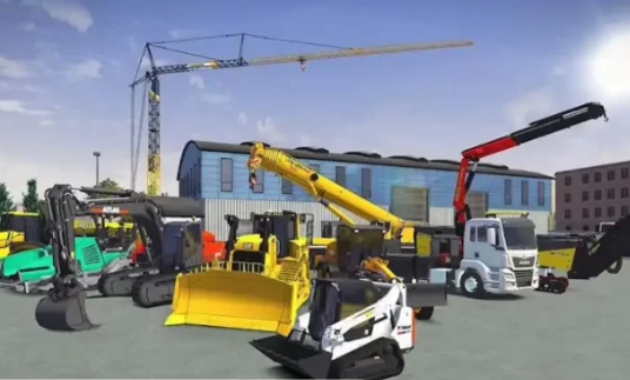Construction is the backbone of modern civilization, shaping our cities, homes, and infrastructure. It encompasses everything from the towering skyscrapers of urban landscapes to the modest homes that provide shelter and comfort. This article delves into the various facets of construction, exploring its importance, the processes involved, and the future of the industry.

Table of Contents
The Importance of Construction
Economic Impact
Construction plays a pivotal role in the global economy. It is a significant driver of economic activity, contributing to job creation and economic growth. According to the World Bank, the construction industry accounts for approximately 13% of the global GDP. The sector employs millions of people worldwide, from skilled tradespeople and engineers to architects and project managers.
Moreover, construction projects stimulate other industries, including manufacturing, real estate, and finance. For example, building a new residential area not only creates jobs for construction workers but also boosts demand for materials like steel, concrete, and glass. This interconnectedness underscores the vital role that construction plays in economic development.
Social Impact
Beyond its economic significance, construction has a profound social impact. Infrastructure projects, such as roads, bridges, and schools, improve the quality of life by providing essential services and enhancing accessibility. Residential construction addresses housing needs, offering shelter and contributing to community development.
Public construction projects also support social well-being by creating spaces for recreation, healthcare, and education. Parks, hospitals, and libraries are all products of thoughtful construction, designed to enhance the lives of individuals and foster community cohesion.
The Construction Process
Planning and Design
The construction process begins with meticulous planning and design. Architects and engineers collaborate to create detailed blueprints and plans that meet the project’s requirements. This stage involves evaluating site conditions, determining the feasibility of the design, and ensuring compliance with local regulations and standards.
During the planning phase, various factors are considered, including the project’s budget, timeline, and environmental impact. This stage is crucial for identifying potential challenges and developing strategies to address them, ensuring that the project progresses smoothly.
Construction Phase
Once the design is finalized, the construction phase begins. This stage involves several key steps:
- Site Preparation: Clearing and leveling the construction site, and establishing necessary infrastructure like utilities and access roads.
- Foundation Work: Laying the foundation is critical for providing structural stability. This can involve digging, pouring concrete, and reinforcing the base to support the entire structure.
- Building Superstructure: Erecting the framework of the building, including walls, floors, and roofs. This phase involves various trades, including carpenters, masons, and ironworkers.
- Finishing Work: Completing the interior and exterior of the building, including installations such as plumbing, electrical systems, and HVAC (heating, ventilation, and air conditioning). Interior finishes like flooring, painting, and cabinetry are also completed during this phase.
Quality Control and Inspection
Quality control is an essential part of the construction process. Regular inspections ensure that the work meets the required standards and specifications. Inspectors check for compliance with building codes, safety regulations, and design specifications. Any issues identified during inspections are addressed promptly to avoid delays and ensure the safety and integrity of the structure.
The Future of Construction
Technological Advancements
The construction industry is undergoing a transformation driven by technological advancements. Innovations such as Building Information Modeling (BIM), 3D printing, and drones are revolutionizing the way construction projects are planned and executed.
- Building Information Modeling (BIM): BIM allows for the creation of detailed digital models of buildings, facilitating better planning, coordination, and management throughout the construction process. It helps identify potential issues before construction begins, reducing errors and inefficiencies.
- 3D Printing: This technology is being used to create building components and even entire structures. 3D printing offers the potential for faster construction, reduced material waste, and cost savings.
- Drones: Drones are used for site surveys, progress monitoring, and safety inspections. They provide valuable data and imagery, improving accuracy and efficiency in construction management.
Sustainability and Green Building
Sustainability is becoming increasingly important in construction. Green building practices aim to minimize the environmental impact of construction activities and promote energy efficiency. Key aspects of green building include:
- Energy Efficiency: Designing buildings to reduce energy consumption through efficient insulation, windows, and HVAC systems. Renewable energy sources, such as solar panels, are also incorporated to reduce reliance on fossil fuels.
- Sustainable Materials: Using materials that are environmentally friendly, such as recycled or rapidly renewable resources. Sustainable materials reduce the carbon footprint of construction and promote the conservation of natural resources.
- Waste Management: Implementing strategies to minimize and manage construction waste. This includes recycling materials and reducing waste generation through careful planning and material management.
Workforce Development
As the construction industry evolves, so does the need for a skilled workforce. Training and education programs are essential for equipping workers with the knowledge and skills required to adapt to new technologies and methodologies. Industry stakeholders are focusing on workforce development to address skills shortages and ensure a pipeline of qualified professionals.
Challenges Facing the Construction Industry
Despite its significant contributions, the construction industry faces numerous challenges that can impact its effectiveness and sustainability.
Project Delays and Cost Overruns
One of the most common issues in construction projects is delays and cost overruns. Projects can be delayed due to a variety of factors, including weather conditions, supply chain disruptions, and unexpected site conditions. Cost overruns often occur due to unforeseen expenses, design changes, or errors in estimating project costs.
Effective project management, detailed planning, and clear communication among all stakeholders are crucial for minimizing delays and managing costs. Implementing project management software and utilizing data analytics can also help in predicting and mitigating potential issues before they escalate.
Safety Concerns
Construction sites are inherently risky environments, with numerous hazards that can lead to accidents and injuries. Ensuring the safety of workers is a top priority and requires strict adherence to safety regulations, proper training, and the use of personal protective equipment (PPE).
The industry is increasingly adopting technology to enhance safety. Wearable devices, such as smart helmets and vests, can monitor vital signs and detect potential hazards, providing real-time data to prevent accidents. Additionally, virtual reality (VR) simulations are being used for safety training, allowing workers to experience and learn how to handle hazardous situations in a controlled environment.
Environmental Impact
The construction industry is a major contributor to environmental issues, including resource depletion, pollution, and waste. The sector is working towards reducing its environmental footprint through sustainable practices, but challenges remain.
- Resource Depletion: The extraction and use of natural resources for construction materials can lead to environmental degradation. Efforts to promote the use of recycled and sustainable materials are crucial for addressing this issue.
- Pollution: Construction activities can generate air and water pollution, affecting local ecosystems and communities. Implementing measures to control emissions and manage waste can help mitigate these impacts.
- Waste Management: Construction projects often produce significant amounts of waste, including leftover materials and debris. Efficient waste management practices, such as recycling and reusing materials, are essential for reducing the environmental impact.
The Role of Innovation in Addressing Challenges
Innovation is key to overcoming the challenges faced by the construction industry. New technologies and approaches are being developed to improve efficiency, safety, and sustainability.
- Smart Construction: The integration of smart technologies into construction practices is transforming the industry. Smart sensors and IoT (Internet of Things) devices can monitor construction processes in real-time, providing valuable data for optimizing performance and detecting issues early.
- Modular and Prefabricated Construction: Modular and prefabricated construction methods involve manufacturing building components off-site and assembling them on-site. These methods can reduce construction time, minimize waste, and improve quality control.
- Advanced Materials: Research into advanced materials, such as self-healing concrete and high-performance insulation, is driving innovation in construction. These materials offer enhanced durability, energy efficiency, and sustainability benefits.
Case Studies in Modern Construction
Examining successful construction projects can provide valuable insights into best practices and innovative approaches. Here are a few notable examples:
- The Burj Khalifa, Dubai: As the tallest building in the world, the Burj Khalifa represents a marvel of modern engineering and construction. Its design and construction involved cutting-edge technology and materials, setting new standards in skyscraper construction.
- The Eden Project, UK: The Eden Project is an example of sustainable construction, featuring geodesic domes made from advanced materials. The project emphasizes environmental education and conservation, demonstrating the potential for construction to contribute positively to sustainability goals.
- The High Line, New York City: The High Line is a successful urban regeneration project that transformed an old elevated railway into a vibrant public park. This project highlights the potential of repurposing existing structures and integrating green spaces into urban environments.
Conclusion
Construction is an ever-evolving industry that plays a critical role in shaping our built environment. From its economic and social impacts to the processes and challenges it faces, the sector is integral to modern society. Technological advancements and sustainable practices are driving positive changes, addressing challenges, and paving the way for a more efficient, safe, and environmentally responsible construction industry.
As the world continues to grow and change, the construction industry will need to adapt and innovate to meet new demands and expectations. By embracing new technologies, prioritizing sustainability, and addressing challenges head-on, the industry can continue to build the infrastructure and spaces that support and enhance our lives.



